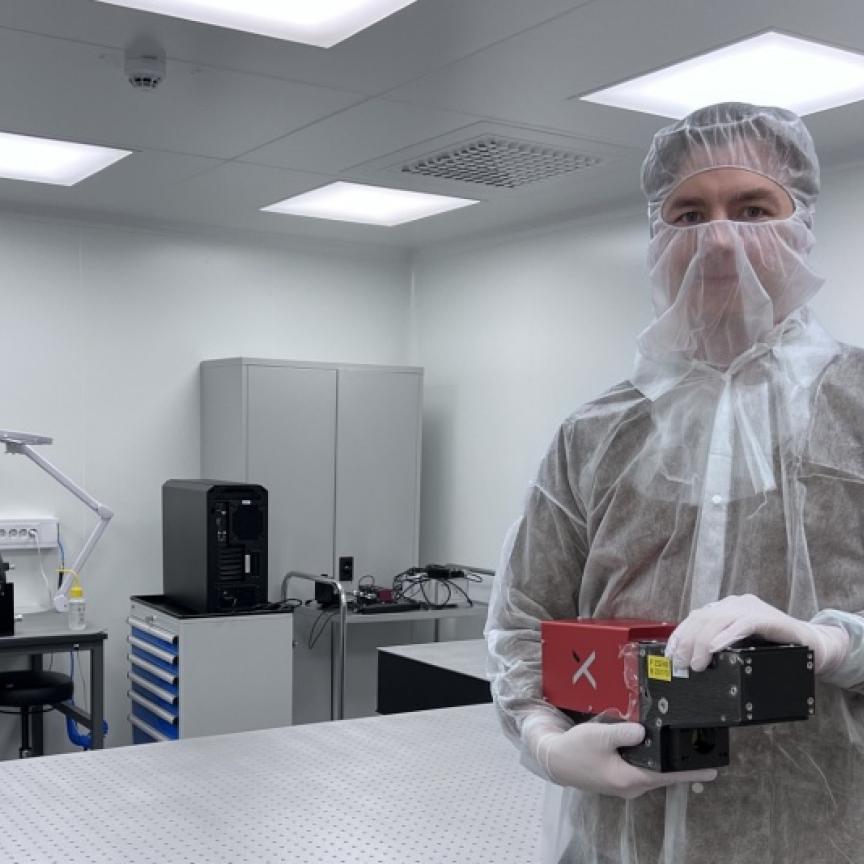Application note: Differential optical absorption spectroscopy

The world’s coal-burning power plants emit a range of particulate and gaseous pollutants. Over the years, we’re seen progress to reduce emissions from both a technical and legislative standpoint, with an increasing number of clean energy solutions and initiatives such as the Clean Air Act (CAA) encouraging reduced emissions.
However, the real-time monitoring of gaseous pollutants is still a major challenge for many such power plants and any other organisation that wants to monitor emission rates. This is where absorption spectroscopy can help, which is an established measurement method for many environmental monitoring techniques.
When dealing with individual spectra, absorption spectroscopy often uses a tunable laser source in conjunction with a series of photodetectors. However, the molecular gases required for accurate emissions monitoring are complex and diverse, with absorption bands in both the infrared and UV/visible regions of the spectrum.
When dealing with complex emissions spectra for atmospheric pollutants, a different excitation laser would be required for each spectrum of interest, further compounding the cost of these expensive optical systems.
With the advent of modern CCD-based spectrometers, a new technique emerged as a viable alternative to excitation laser-based systems. This methodology is called Differential Optical Absorption Spectroscopy (DOAS) and it uses inexpensive CCD spectrometers in combination with a single broadband light source to analyse complex emission spectra. When compared to both existing single- and multi-species detection techniques, this form of absorption spectroscopy substantially decreases the cost.
This whitepaper details the use of DOAS for monitoring emissions around the globe.
The world’s coal-burning power plants emit a range of particulate and gaseous pollutants. Over the years, we’re seen progress to reduce emissions from both a technical and legislative standpoint, with an increasing number of clean energy solutions and initiatives such as the Clean Air Act (CAA) encouraging reduced emissions.
However, the real-time monitoring of gaseous pollutants is still a major challenge for many such power plants and any other organisation that wants to monitor emission rates. This is where absorption spectroscopy can help, which is an established measurement method for many environmental monitoring techniques.
When dealing with individual spectra, absorption spectroscopy often uses a tunable laser source in conjunction with a series of photodetectors. However, the molecular gases required for accurate emissions monitoring are complex and diverse, with absorption bands in both the infrared and UV/visible regions of the spectrum.
When dealing with complex emissions spectra for atmospheric pollutants, a different excitation laser would be required for each spectrum of interest, further compounding the cost of these expensive optical systems.
With the advent of modern CCD-based spectrometers, a new technique emerged as a viable alternative to excitation laser-based systems. This methodology is called Differential Optical Absorption Spectroscopy (DOAS) and it uses inexpensive CCD spectrometers in combination with a single broadband light source to analyse complex emission spectra. When compared to both existing single- and multi-species detection techniques, this form of absorption spectroscopy substantially decreases the cost.
This whitepaper details the use of DOAS for monitoring emissions around the globe.

